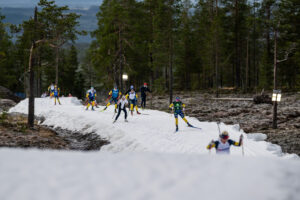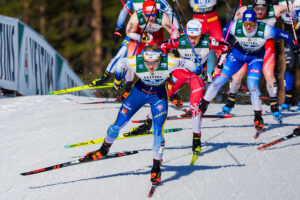Strength training – part 1: Maximal strength and core work
During the pre-competition period and a busy race season, we often overlook supplementary training. Below are two strength-development programs that can be used almost year-round.
The first program focuses on developing specific maximal strength for cross-country skiers, targeting the main muscle groups. The second, alternative strength program uses a powerband resistance band and focuses on strengthening the postural muscles.
Unlike the main muscle groups addressed in the first program, the second program works with so-called synergistic muscles. These play a fundamental role in overall movement and, together with the postural muscles, help maintain the body’s balance.
Cross-country skiing engages the entire body. Coordination, technique, timing, and balance all play a crucial role in overall performance.
How to proceed
One advantage of training for cross-country skiing is the wide variety of training tools available, which also applies to strength training. The younger the athletes are, the more they should focus on developing general strength with an emphasis on agility. At this age, we should focus on developing natural strength through activities such as climbing, wrestling-based games, gymnastics, or agility circuits.
Initially, we focus on strengthening the large muscle groups and gradually transition to more targeted strength training. When developing strength abilities, training must always be adapted to the athlete’s age and level. Emphasis should always be placed on correct technique, and once movements are automated, we can increase the speed of execution.
It’s essential to have well-prepared postural muscles, especially the major muscle groups around the abdomen and back, as these are involved in nearly every movement. If we can maintain body stability and perform body-weight exercises with good technique, we can progress to more specialized strengthening of the upper and lower limbs.
Personally, the author is not a supporter of frequent machine-based training, as it often isolates large muscle groups and does not provide comprehensive strengthening. Strength training specifically tailored to cross-country skiing can enhance overall performance, particularly in terms of technique. It promotes a better movement economy, speed potential, and also increases VO₂max.
Also Read – Warning: “Many ruin the season before it even begins”
How often should you do strength training?
Like any other training, strength training should be individualized to the athlete’s needs, but 1–2 sessions per week are almost essential. As muscles grow, body weight also increases, which significantly affects aerobic performance. Strength training, therefore, needs to be fine-tuned to match the athlete’s body type.
Developing maximal strength – exercises specifically aimed at cross-country skiing
These exercises focus on developing maximal strength in the upper body. Choose the muscle groups that are most heavily used in cross-country skiing.
Select, for example, 4–5 upper-body exercises, performing a maximum of 4–8 repetitions in three sets with 2–3 minutes of rest. If you can do more than eight reps, it’s time to add extra weight.
We should also keep in mind the gradual progression we want to achieve during the season. The program can be divided into periods based on the training cycle.
Modern cross-country skiing places a strong emphasis on upper-body strength due to the increasing importance of double poling. Lower-body exercises should still be an integral part of training because the legs significantly influence VO₂max.
Dumbbell pullover (lying)
How to perform: Start lying on your back with dumbbells above your head. Inhale as you lower your arms behind your head, exhale as you return them above your head. The pullback should be dynamic with full-body tension, especially in the core.
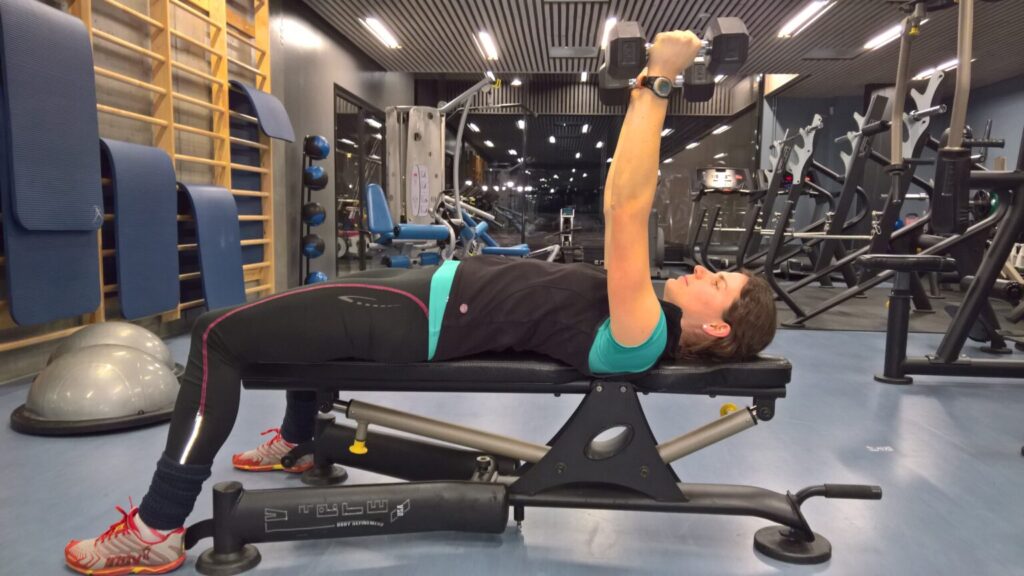
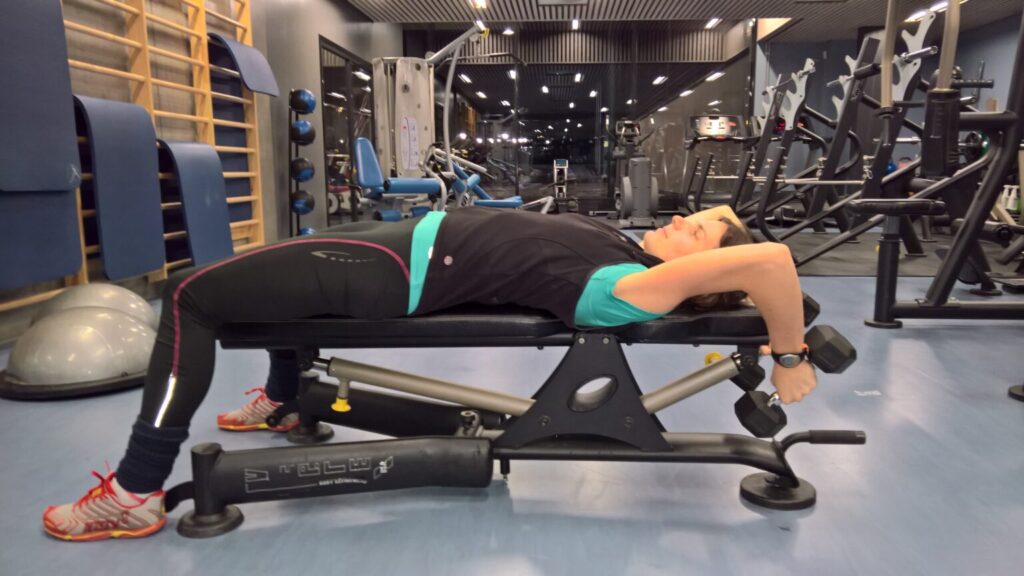
Dip push-ups (on parallel bars)
How to perform: Start in support on the bars. Inhale as you lower your body with a slight forward lean. Exhale as you push back to the starting position. The push should be dynamic.
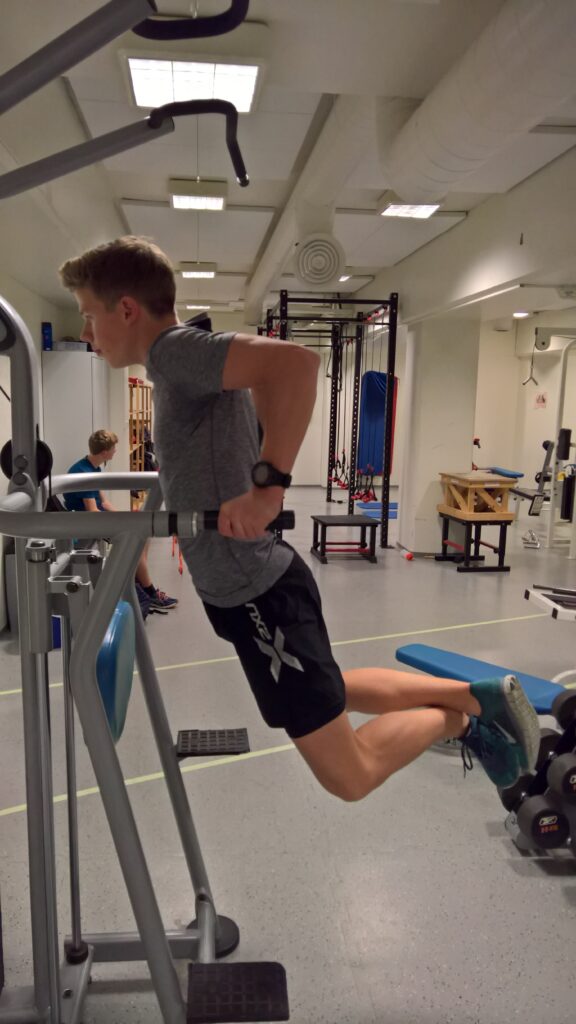
Pull-ups
How to perform: From a hang on the bar, exhale as you pull upward dynamically until your chin passes above the bar, then lower yourself back down under control.
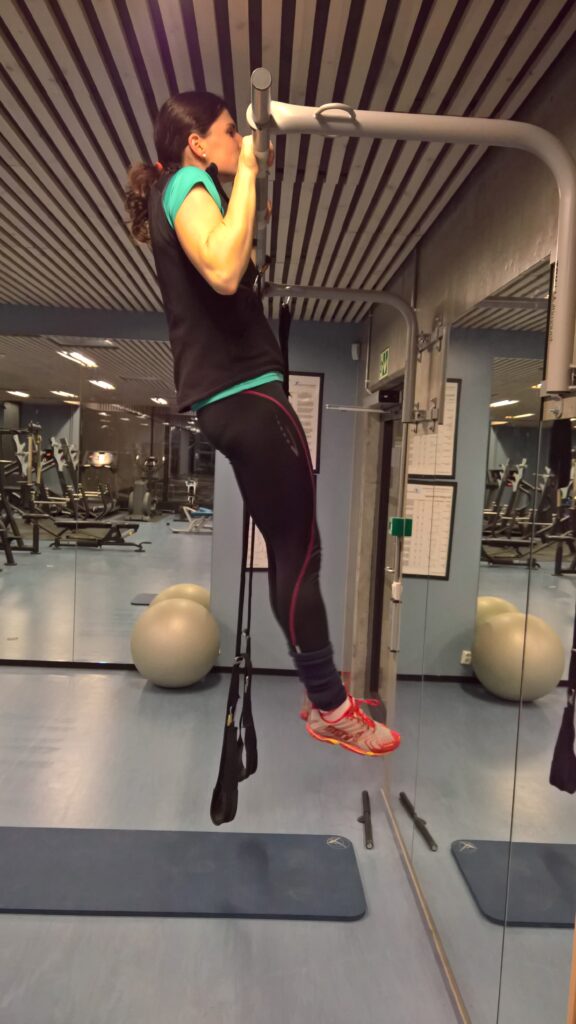
“Bjørgen” exercise – plank transitions
How to perform: Maintain a strong, stable body throughout the exercise. Start in the high plank (here with a more challenging version that uses suspended feet). Bend your elbows to transition to a forearm plank. From the forearm position, activate the body and return to the high plank with a slight forward lean.

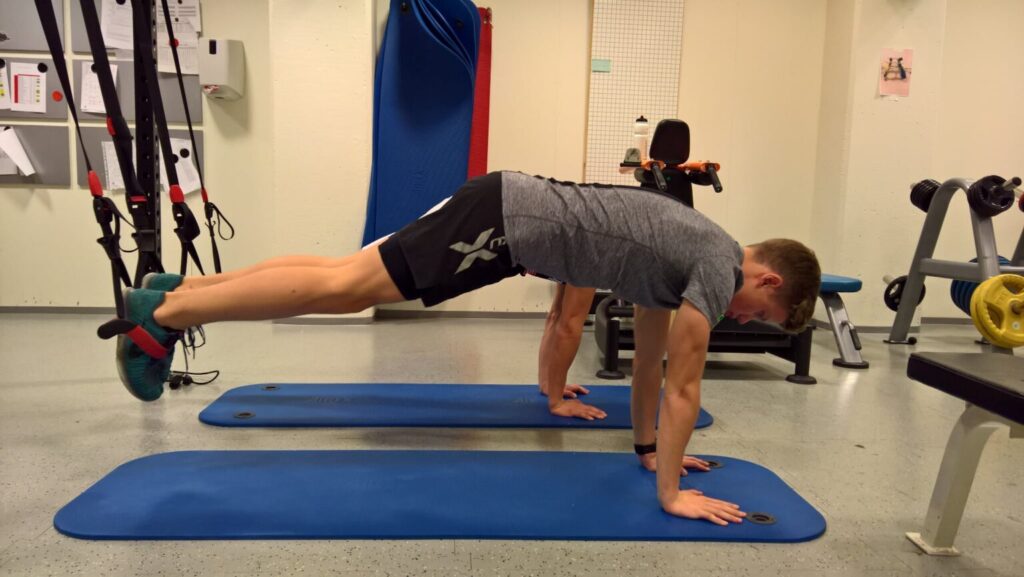
Jumps onto an unstable surface
How to perform: From a classic single-leg stance, jump onto an unstable surface and hold the position for 1–2 seconds before stepping down.
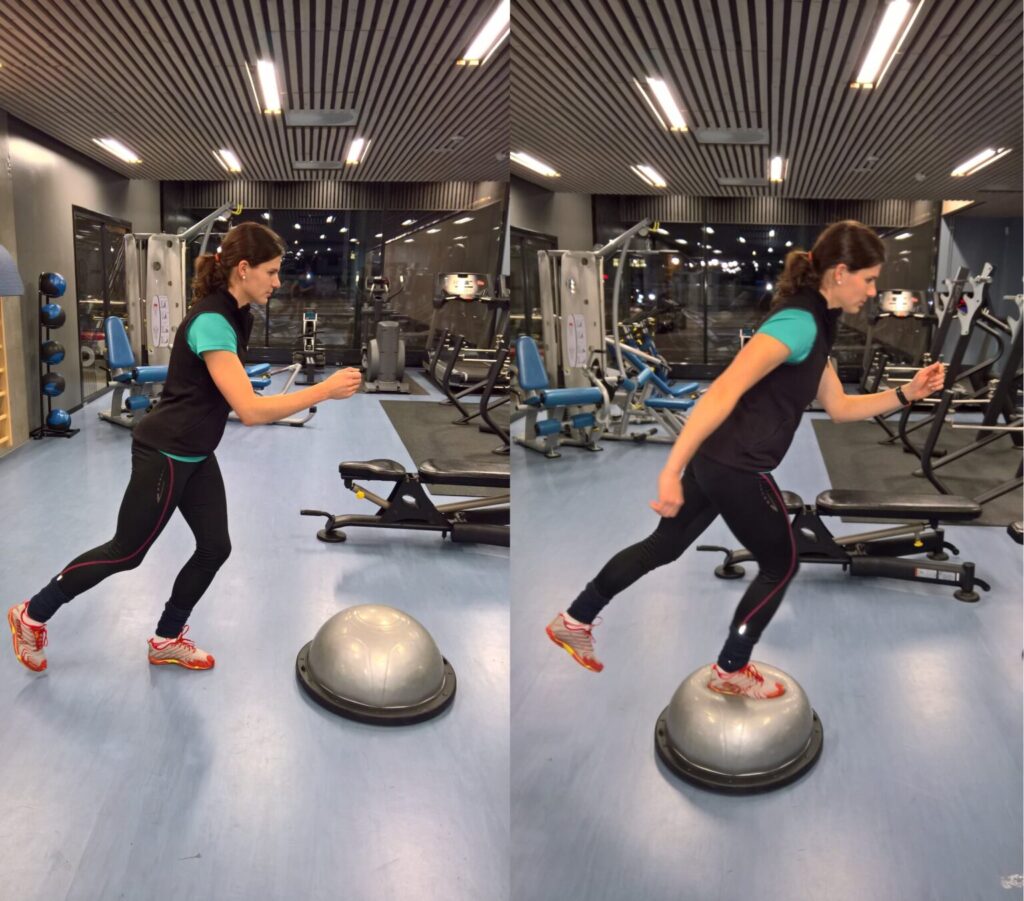
The article has been updated. It was first published on Bezky.net in August 2018.
Are you interested in training for long-distance, traditional cross-country skiing and biathlon? Click HERE and read more about it.

